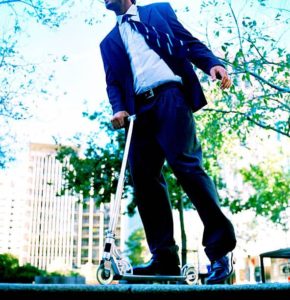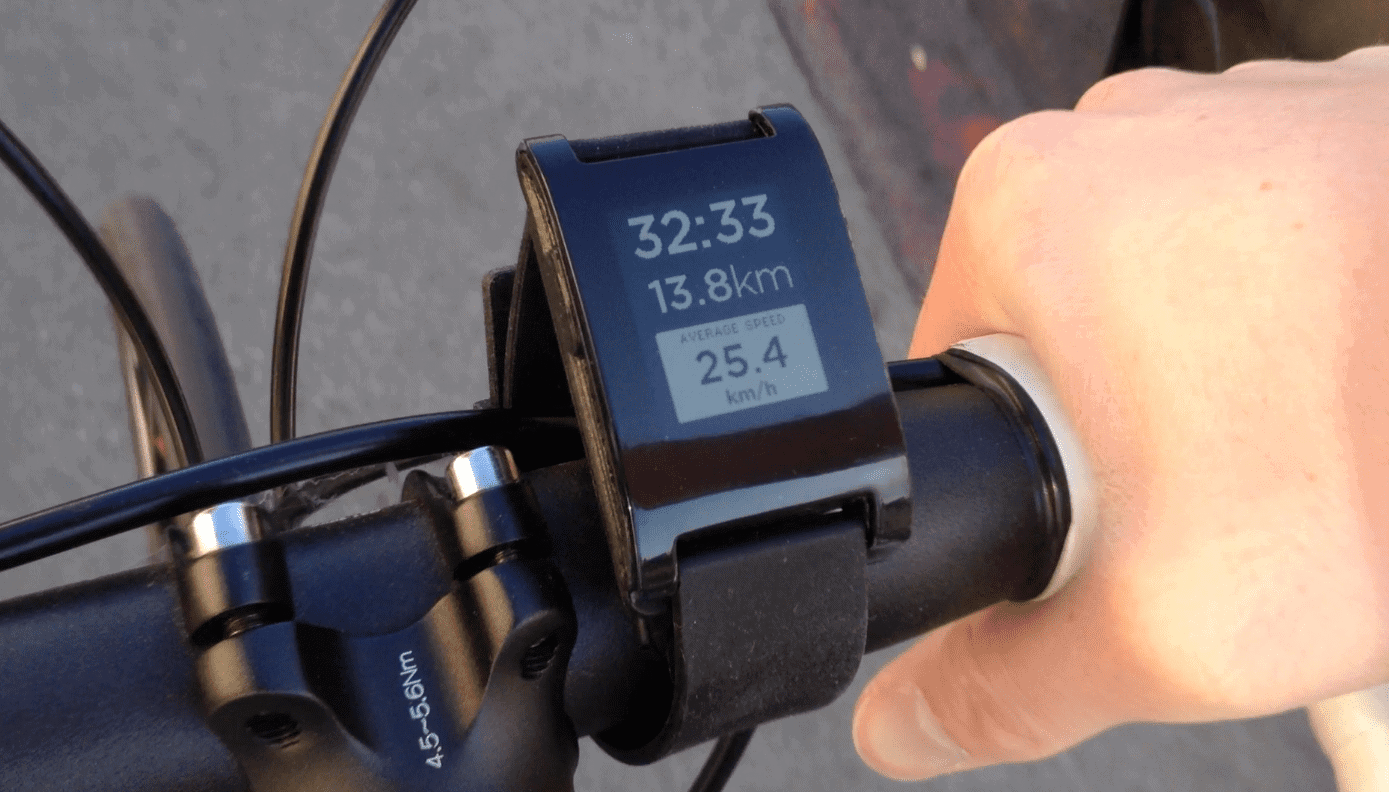As you can guess, the answer to this question is tricky and depends on many variables. But to give you a brief explanation, below, I’ve made this table that illustrates the distance in miles and the average time it would take to cross a given distance on a scooter.
Short distances are done mainly by commuters going to work or city dwellers. So I have to take into account traffic and stops.
The electric scooters range on a full charge go in the market right now, from 15 miles up to 30 miles for the most recent ones. Below is a chart showing the time to destination for all ranges.
How Far Can An Electric Scooter Go
| Distance in miles | Distance in km | Duration |
| 1 mile | 1.6 km | 4 minutes |
| 1.5 miles | 2.4 km | 6 minutes |
| 2 miles | 3.2 km | 8 minutes |
| 2.5 miles | 4 km | 10 minutes |
| 3 miles | 4.8 km | 12 minutes |
| 3.5 miles | 5.6 km | 14 minutes |
| 4 miles | 6.4 km | 16 minutes |
| 5 miles | 8 km | 20 minutes |
| 6 miles | 9.6 km | 24 minutes |
| 7 miles | 11.2 km | 28 minutes |
| 8 miles | 12.8 km | 32 minutes |
| 9 miles | 14.4 km | 36 minutes |
| 10 miles | 16 km | 40 minutes |
| 11 miles | 17.6 km | 44 minutes |
| 12 miles | 19.2 km | 48 minutes |
| 13 miles | 20.8 km | 52 minutes |
| 14 miles | 22.4 km | 56 minutes |
| 15 miles | 24 km | 1h |
| 16 miles | 25.6 km | 1h 4 min |
| 17 miles | 27.2 km | 1h 8min |
| 18 miles | 28.8 km | 1h 12min |
| 19 miles | 30.4 km | 1h 16min |
| 20 miles | 32 km | 1h 20 min |
| 30 miles | 48 km | 2h |
How long does it take to scooter a mile
| Scooter Type | Duration |
| With Kick scooter | 6 minutes |
| With Electric scooter | 4 minutes |
Time to Destination Chart on a kick scooter
| Distance in miles | Distance in km | Duration |
| 1 mile | 1.6 km | 6 minutes |
| 1.5 miles | 2.4 km | 9 minutes |
| 2 miles | 3.2 km | 13 minutes |
| 2.5 miles | 4 km | 17 minutes |
| 3 miles | 4.8 km | 22 minutes |
| 3.5 miles | 5.6 km | 25 minutes |
| 4 miles | 6.4 km | 29 minutes |
| 5 miles | 8 km | 35 minutes |
| 6 miles | 9.6 km | 42 minutes |
| 7 miles | 11.2 km | 49 minutes |
| 8 miles | 12.8 km | 56 minutes |
| 9 miles | 14.4 km | 1h 03min |
| 10 miles | 16 km | 1h 12min |
| 11 miles | 17.6 km | 1h 20min |
| 12 miles | 19.2 km | 1h 28min |
| 13 miles | 20.8 km | 1h 36min |
| 14 miles | 22.4 km | 1h 46min |
| 15 miles | 24 km | 1h 57 min |
Fac
tors to consider when estimating ride time
The way back
 What’s your commute to work like? :
What’s your commute to work like? :
- Are there hills
- Are you going to take care of the traffic
- Is there a bike lane that you can take
- How is your itinerary?
If you have a route with many hills, the traffic may be pretty difficult for a few kilometers, but it will be much easier if you commute on a flat and low route.
So you will need to figure out what your route looks like to estimate how long it will take you to get there.
Fitness level

The next point you need to consider is how fit you are. If you exercise and ride a lot, a 10 miles scooter ride may not be that important. But it will be hard if you seldom ride a 10 miles scooter ride.
Even if you don’t consider yourself very fit, you should try to make the trip on a scooter. Start with a shorter scooter ride, two to five miles, and over time you’ll get fitter and go faster and faster, especially if you have the right scooter.
The type of scooter
The next factor is the type of scooter you ride:
- Of course, you can go faster if you have an electric scooter because you will have this assistance.
- A road kick scooter is easier to go faster, and it’s a bit more efficient.
- Other scooters, such as Dirt or freestyle scooters, will be slower.
 Depending on your scooter, you will determine how much effort you need to put into riding and how long it will take you.
Depending on your scooter, you will determine how much effort you need to put into riding and how long it will take you.
Wheather
There will be a lot of wind? The wind direction is important because you will be slower if you ride against the wind and much faster if you have the wind at your back.
How to improve the speed
Body position.

One of the most significant differences is your position on the scooter.
So the difference between standing up on the tops or not, with your elbows bent and your back flat, is enormous. And in fact, the faster you go, the more critical it is to be aerodynamic, and the more you will benefit from it.
Pacing
The way we distribute our effort can considerably influence our final average speed.
If we imagine that our theoretical journey lasts an hour, we have a finite capacity over that hour, so if you go too fast, you will inevitably go slower at the end.
This rhythm strategy will make you feel like you are going slowly, but in the end, you will be impressed by how fast you get to your destination.
Train at a sweet spot
You’ll go faster on your scooter if you get fitter and more powerful. That’s a fact. However, to get in shape, you’ll need to train.
Weight
The less you weigh, the faster you’ll climb on rides.
Just a few pounds can make a huge difference,
so you can exercise a little more, cut back on calories, or combine both.
The other option is to lose some weight by scootering. But as you know, it’s pretty damn expensive.
You can follow other options, even if it takes more investment. Aerodynamics are even more important than the weight on routes where there is less altitude change:
- Your clothes: Make sure you have a tight scootering kit.
- Your helmet. You can invest in an aerodynamic helmet.
- And when it comes to your scooter, you can make many improvements: aero wheels, aero frames, and aero time trial bars.
- Of course, it also helps your body position.
